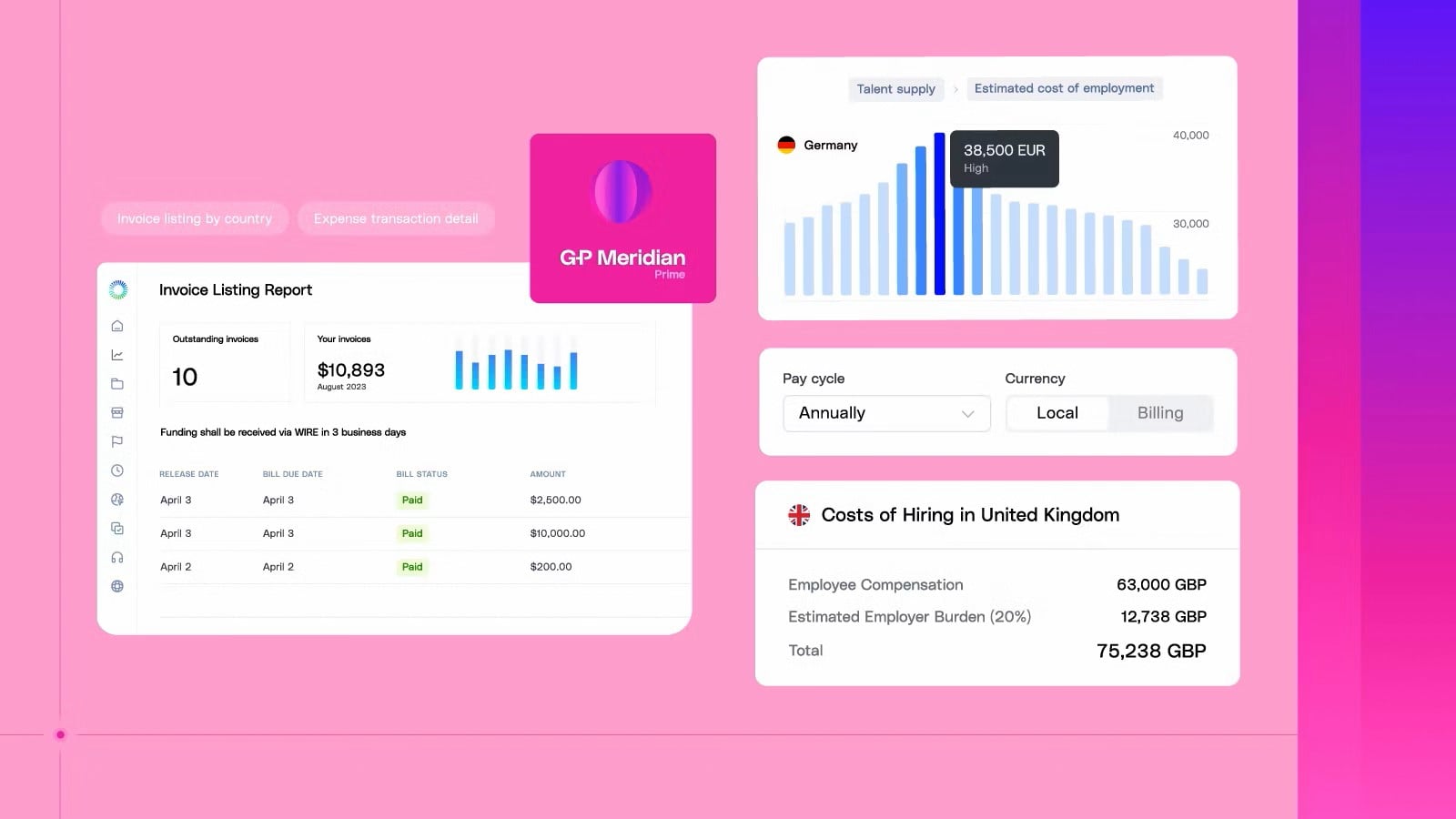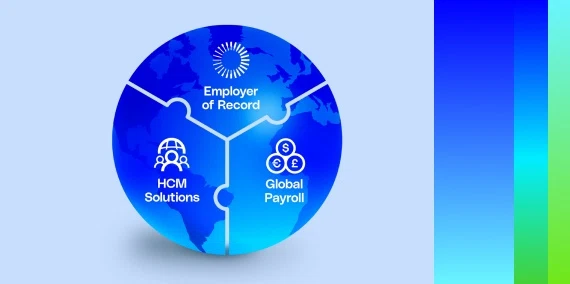For businesses all around the world, the global growth mindset has arrived. Yet, global organizations can only thrive with leaders who are committed to the growth of the business — and their workforce.
In today’s evolving market, hiring the right talent at the right time is more important than ever. Strategic workforce planning allows human resources to identify talent needs associated with an organization’s future goals. With a powerful Employer of Record (EOR) solution in place, you can take global hiring and expansion to the next level.
What is strategic workforce planning?
Strategic workforce planning is the process an organization uses to analyze its workforce and determine the steps it must take to meet current and future hiring needs. Workforce planning also involves determining the most efficient and cost-effective methods to recruit and retain talent.
Workforce plans set a team up for success by addressing internal needs, preempting turnover, and promoting growth at scale. Strategic workforce planning also helps industry leaders find solutions that align with future growth goals.
What is an example of strategic workforce planning?
Strategic workforce planning is essential to strong workforce management. From identifying skills gaps to building new roles, strategic planning takes many forms. Some examples of strategic workforce planning include:
- Building strategic plans for your future workforce.
- Brainstorming learning and development plans.
- Building new positions to fill talent gaps.
- Maintaining global compliance with a reliable EOR in place.
- Establishing a talent acquisition strategy.
- Expanding services, operations, or products.
What are the major objectives of strategic workforce planning?
When planning ahead, a business must evaluate the current state of the company, its current workforce, and market trends. An effective workforce plan must address “Seven Rs,” or seven key objectives, to ensure the strategic workforce plan can help companies secure the right people, with the right skills, in the right roles.
Here are a few key steps talent management should take to prepare for their future workforce:
1. Hire the right people.
In the new remote business world, geographical barriers have dissipated. Now, you can find the best talent, regardless of where they live. Expand your talent acquisition strategy beyond your local area to find the right people for your team. Hire employees or independent contractors that align with your company culture and specific needs.
2. Look for the right skills.
Pick new hires with strong work experience based on a specific job description. Clearly outline the necessary skills, and the impact of upskilling on your overall business model.
3. Build the right size and shape.
Make sure new hires align with the number of people and roles for the size of the company. Then, shape your workforce so that new hires make up the right configuration and competencies needed for success.
4. Choose the right time and place.
Continued growth requires placing the right people in the right positions at the right time. Identify gaps to ensure new hires can contribute in specific locations that align with operational growth plans.
5. Stick to the right budget.
Plan for direct and indirect costs you can expect to incur while hiring. Some hidden expenses include paying for job ads, time spent on applicant interviewing, and new employee salaries, benefits, and insurance. Focus on strategies to optimize costs related to talent and plan for direct or indirect hiring expenses. Be sure to budget only for the talent your company needs.
Why do you need strategic workforce planning?
The benefits of strategic workforce planning are both short and long term. A strong workforce planning strategy allows your HR team to successfully train and develop talent, set up succession planning, and improve employee retention.
Agile workforce planning shapes the employee experience in significant ways. It helps companies form teams that work well together for impactful, long-term results. Strategic planning can also improve investor relations and even enhance talent management or HR capabilities.
Workforce planning helps companies:
1. Reach financial objectives.
Finance and human resources are excellent partners in business planning. As with any successful partnership, the two teams depend on each other to drive revenue for the company. The finance department should analyze insights to determine how the workforce is contributing to the organization. Then, HR can make data-driven decisions to streamline hiring to meet financial goals.
2. Solve for workforce gaps.
A workforce gap, also known as a skills gap, reveals the skills your employees may lack and need to be acquired for future success. With the right knowledge base, you can adjust your hiring strategy to meet company goals.
3. Improve employee engagement.
People are at the center of effective workforce planning, so your employees’ well-being should be a top priority. Ensure you’re offering key benefits including flexible office plans, paid time off, and healthcare benefits.
4. Reduce costs.
Effective workforce planning can also benefit your bottom line. To reduce unwanted costs, hire the right number of employees. By avoiding overstaffing or understaffing your teams, you can optimize workforce utilization and reduce unnecessary spending.
5. Mitigate risk.
Paired with the expertise of a reliable Employer of Record (EOR) solution, strategic workforce planning can help you adhere to employment regulations as you expand globally.
With our simplified EOR package, G-P Meridian Core™, you can begin building your global teams starting in just minutes. Global compliance with local rules and regulations is ensured in every country, everywhere in the world, every time.

- Determine objectives.
- Analyze your workforce.
- Identify skills gaps.
- Anticipate future challenges.
- Develop an action plan.
- Implement the action plan.
- Test and monitor the plan.

How to build a strategic workforce planning framework
What are the building blocks to a successful, engaged, and productive team? A strong strategic workforce plan starts with business strategy. Business leaders tend to focus on immediate hiring needs to meet short-term targets. Let’s explore how HR leaders can leverage data-driven decision making to set themselves up for success.
1. Determine objectives.
The first step of the strategic planning process? Set realistic goals. Assess your short- and long-term business goals and include the right people in the conversation beyond simply HR representatives. Include HR technology experts, business executives, and financial services representatives when developing strategic workforce planning initiatives.
2. Analyze your workforce.
The second step in the planning process is to analyze the current workforce. Closely evaluate your data insights to guarantee your organization has the right mix of technologies, talent, and employment models.
3. Identify skills gaps.
A skills gap analysis will provide valuable future workforce data. A skills gap refers to the difference between the skills an employer expects their employees to have, and the skills their employees actually possess. A detailed analysis will help an organization hire new talent with skills that match company needs or upskill existing talent.
4. Anticipate future challenges.
It’s important to develop a workforce plan that anticipates future business issues and provides actionable steps to address them. Examples of future workforce issues range from a supply chain problem to labor market concerns.
5. Develop an action plan.
Establish a plan for recruiting and retaining talent, restructuring the organization, and enhancing technologies as needed.
6. Implement the action plan.
Make sure necessary resources are in place, roles are clear, and needs are met to execute the plan and achieve business goals.
7. Test and monitor the plan.
As business needs change, chances are your workforce planning strategy will, too. Regularly test and monitor your plan to identify improvement areas.
Plan ahead with G-P Meridian Prime™.
Find, hire, and manage global teams with G-P Meridian Prime™, our most powerful Employer of Record (EOR) package. With our premium solution, you can take advantage of additional tools, expanded guidance, and access to exclusive advisory services.

G-P Meridian Prime™ offers advanced features like expert hiring and reporting insights to optimize your global expansion planning.
1. Plan ahead when onboarding and offboarding.
Simplify and streamline onboarding to bring new hires onto your team quickly. Planning for large-scale changes across your workforce? Our bulk onboarding feature allows G-P Meridian Prime account holders to handle large onboardings across their workforce. Our technology also handles offboarding with sensitivity, care, and in compliance with local laws.
2. Be ready for anything with advanced expansion insights.
Inform your expansion strategy with research tools to tap into richer global hiring data, including:
- Talent availability.
- Benefits analysis.
- Quarterly account review services.
- Custom workforce reports to fuel your expansion planning.
3. Get guidance from custom advisory services.
G-P advisory services let you explore new market opportunities with greater strategic freedom and confidence. Is a merger or acquisition in your future? Let our M&A transition services handle complex employee transition issues for you.
Take advantage of unrivaled technology and unmatched expertise today. Then, build a better strategic workforce plan tomorrow.











